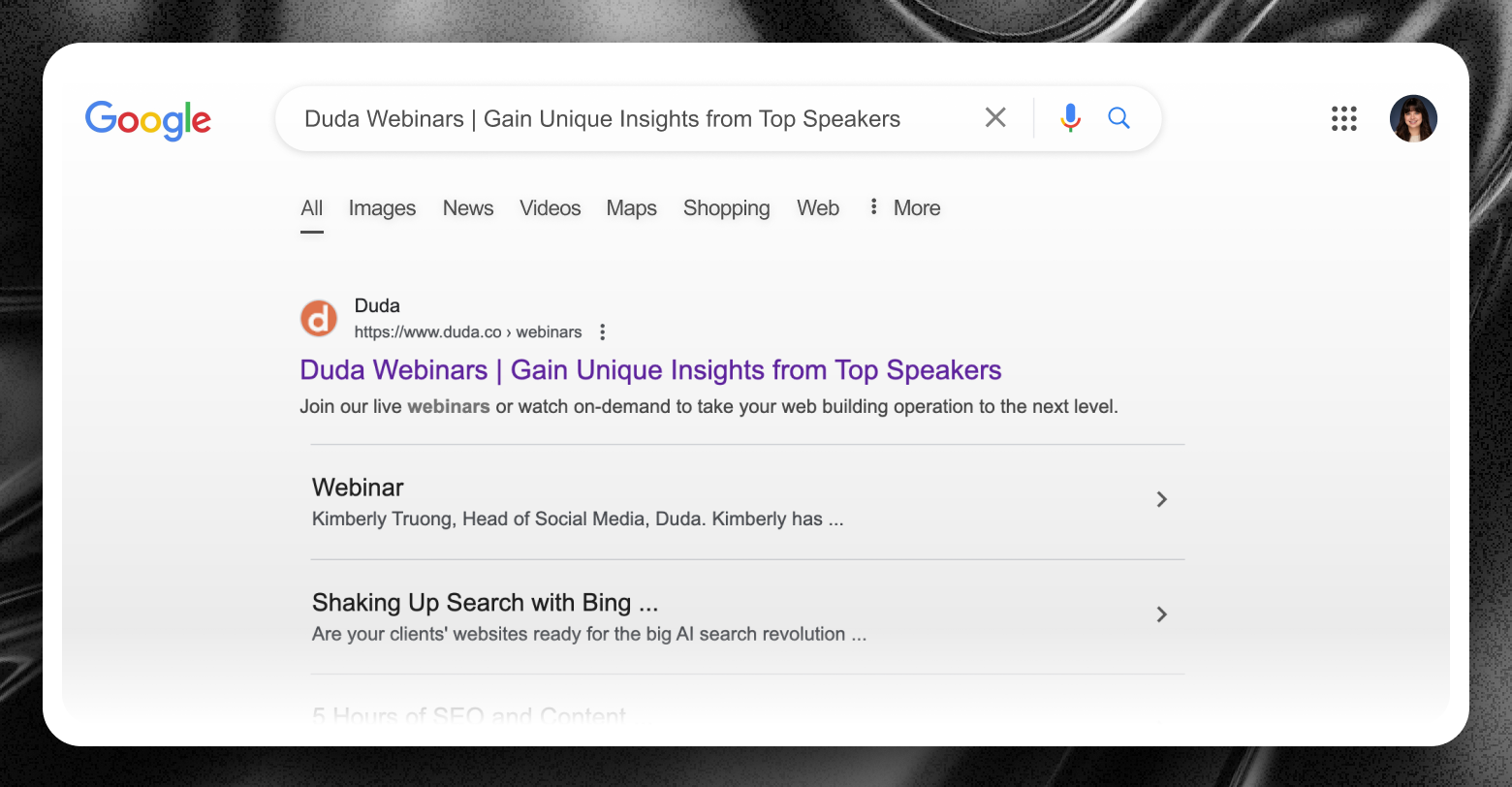After almost 15 years of working in content and SEO, I’ve seen a lot of trends come and go. But no matter what the fad of the day was, the one thing that’s always been true—the thing that actually worked—was creating great content that genuinely helped people.
Early in my career, my boss handed me a little blue hardcover with a simple illustration of a wrench and the word
Youtility across the front.
It was
Jay Baer’s 2013 New York Times best seller, and my first assignment as a newly-minted Content Marketing Manager was to read it cover to cover.
It was a career-defining moment–and it’s hard to believe it was more than a decade ago.
Baer’s argument that smart marketing is about help, not hype quickly became one of my own personal mantras.
The best part is it worked!
When my team and I prioritized providing real value, the results spoke for themselves.
Audience trust grew, engagement went up, and high-quality traffic and leads followed naturally.
In 2025, this principle will be more important than ever, especially with the rise of zero-click searches and a flood of undifferentiated content being churned out with AI.
Algorithms are constantly evolving, but the brands that truly succeed will be the ones that prioritize their audience’s needs over flashy tactics.
Keep reading for my top 10 predictions for where
SEO and content are headed next and what to do about it, whether you’re an in-house marketer or an agency helping your clients navigate what’s to come…
1. Prediction: Algorithms will change quickly, and short-term tactics won’t keep up
Search algorithms will continue their furious rate of change. And make no mistake, chasing their every whim will be futile.
Now is the time to get back to the fundamentals and refocus on your audience.
Is your content written primarily to rank for a keyword? Start over. Write something your audience will read.
Are you posting on Reddit just to get your content to rank in Google results? Figure out if that’s where your audience is actually spending their time, then decide if it’s the right channel.
What to do
Prioritize content and channels based on where your audience spends their time. Be brutally honest—does your strategy align with your audience’s true needs and behaviors?
Bottom line
Stop chasing the algorithm. Start building genuine human connections.
Not sure where to start?
Try
Sparktoro’s audience research tool to understand where your or client’s customers spend time online.
2. Prediction: Hyper-personalized content will be achievable for all brands and budgets
In 2025, your audience expects deeply personalized experiences. They don’t want messaging and content rife with generic claims and crammed with every feature you offer.
They want to understand what you can do for them–specifically–and they won’t waste time trying to figure it out for themselves.
Today,
AI-powered tools make it easier for brands of all sizes to deliver tailored content and interactions focused on each customer’s unique challenges and priorities.
What to do
Get granular with audience segmentation. Create content mapped to their unique pains and journey, and use AI and dynamic content to create 1-to-1 campaigns at scale.
Bottom line
Deep personalization is no longer optional—it’s expected.
Not sure where to start?
Start with one high-impact channel, like personalized email campaigns or landing pages, and iterate from there.
3. Prediction: Short-form content will drive big engagement
Short-form content like bite-sized videos, carousel posts, and memes will be key to capturing your audience’s attention across platforms and making your brand memorable.
But leave the click-bait in 2024. Focus on creating short-form content that delivers value directly within the feed.
What to do
Repurpose longer content into short formats optimized for platforms like TikTok, Instagram, LinkedIn, or YouTube Shorts. Keep your message concise and visually captivating.
Bottom line
Master the art of saying more with less to capture your audience in seconds.
Not sure where to start?
Use a tool like
Canva to transform blog posts into engaging carousel slides or short videos.
4. Prediction: Communities will be the new followers
I expect that savvy brands will shift away from focusing on large social followings and instead prioritize smaller, highly-focused, and deeply-engaged communities.
Building relationships in niche groups–and sharing valuable insights within those groups–will create more meaningful connections and foster brand loyalty.
What to do
Find where your audience is already engaging and meet them there. You can also create your own community through discussion forums, private social groups, or exclusive events.
Bottom line
Prioritize genuine engagement over vanity metrics.
Not sure where to start?
Contribute to existing communities where your customers are already active.
5. Prediction: Content teams will need to think like journalists
People connect with stories and people, not products and faceless brands. Brands that share authentic stories and showcase the human side behind their products will create emotional connections that stand out.
What to do
So say goodbye to me-too content, and make storytelling a central pillar of your content strategy. Take a page from PR: ask better questions, uncover untapped stories, and always have a point of view.
Bottom line
Stories make your brand unforgettable.
Not sure where to start?
Look at your customer testimonials to identify themes and storylines.
6. Prediction: Business leaders will be powerful influencers
Audiences today are skeptical of overly-polished, corporate messaging and paid sponsorships that don’t feel genuine. They crave transparency and insights from real people’s lived experiences. Brands that stay true to their values and lean into their business leaders’ stories will build lasting trust.
What to do
Share a behind-the-scenes look at your founder’s journey, and don’t shy away from mistakes: how did you build your business, how did you learn and grow from failures, what are you still learning?
Bottom line
People connect with people, not businesses.
Not sure where to start?
If you're an agency founder or business leader, start posting regularly on your personal LinkedIn account.
7. Prediction: Measurement and attribution will become more challenging
As privacy regulations tighten, third-party data becomes less reliable, and fewer searches result in a click, tracking customer journeys with precision will become more difficult. Traditional measurement and attribution models that rely on cookies and clicks will struggle to provide the full picture.
What to do
Shift your focus to gathering and analyzing first-party data wherever possible. Use surveys, customer feedback, and direct interactions to fill in data gaps while respecting privacy.
Bottom line
Build a holistic understanding of your audience by going straight to the source. Get creative and focus on what you can measure, while being mindful of the limitations.
Not sure where to start?
Stay focused on business outcomes, not vanity metrics.
8. Prediction: Zero-click searches will make brand-building a key SEO investment
According to a
June 2024 study by Sparktoro and Datos, 60% of searches now result in zero clicks. And as zero-click searches grow, more people are finding answers to their top-of-funnel questions directly on search results pages instead of clicking through to websites. This means your TOFU content might not get the traffic it once did.
Instead, customers are engaging with your brand across a wide variety of platforms–from social media platforms like LinkedIn to private Slack groups and substacks to traditional media outlets.
Be where they are, and give them a reason to search for you when they’re getting ready to buy.
What to do
Build a strong, recognizable brand that stands out wherever your audience finds you. Then make sure you’re creating platform-native content that adds unique value without requiring a click. The branded searches (and clicks) will follow.
Bottom line
Customers meet your brand long before they visit your website. Make every touchpoint count.
Not sure where to start?
Nail down your brand identity and core messaging pillars. Make sure everyone on your team knows it inside and out.
9. Prediction: Brands that use AI to scale production, while maintaining a human connection, will stand out from the noise
AI has already changed marketing forever. What marketer can remember a life before ChatGPT? But it’s important to use it wisely. Brands that effectively balance the power of AI
to scale their operations without losing that genuine human connection will be the ultimate winners.
What to do
Use AI to handle repetitive tasks like metadata generation, drafting, and editing, but always ensure your messaging remains authentic and human.
Bottom line
AI Assistants can speed things up, but can’t replace the emotional connection humans crave.
Not sure where to start?
Use AI to generate draft copy quickly, then refine and infuse your unique voice before sharing.
10. Prediction: Websites will remain the primary source of truth and conversion driver for brands
While maintaining a presence across multiple platforms is important, your website remains the most powerful asset for creating a positive brand experience and driving conversions. It also remains an important source of truth for your brand.
Building websites with well-structured data and high-quality content will be key to being found in traditional search engines like Google and Bing, as well as AI search engines like SearchGPT and
Perplexity.
Once visitors land on your site, crystal clear messaging and a great user experience will help drive them to convert.
What to do
Ensure your website is fast, well-structured, and reflects your brand accurately. Focus on creating a seamless user experience that encourages conversions.
Bottom line
Your website is your ultimate brand asset and conversion engine. Make sure it’s done right!
Not sure where to start?
Choose a
web building platform that prioritizes performance and ease-of-use to build high-performing websites.
In 2025, be human and play the long game
As we move into 2025, the marketing landscape will continue to evolve. To succeed, brands need to prioritize authenticity, build genuine connections, and embrace technologies that enhance personalization and efficiency.
Focus on long-term strategies that foster trust, engagement, and brand loyalty, and you’ll build a foundation strong enough to weather anything—even an SEO zombie apocalypse! 🧟
Want to hear more insights? Join me and 7 other leaders on January 23 for
5 Hours of SEO and Content Strategy for 2025.















